| | |  |
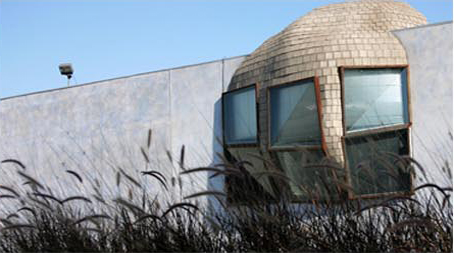 |  |
 |  |
| | Eric Owen Moss
When people think of California style architecture, Eric Owen Moss comes to mind. Eric Owen Moss is an architectural firm based in Los Angeles California. It is named after its founder Eric Owen Moss -- a talented Los Angeles native who was born in 1943 and earned a Bachelor of Arts form the University of California in 1965. Afterwards he earned his Masters of Architecture from the University of California Berkeley, College of environmental Design in 1968 and a second Masters of Architecture from Harvard University Graduate School of Design in 1972. |  |
| |  |
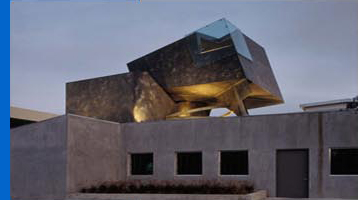 | | Throughout his career the pet project of Eric Own Moss has been to revitalize an abandoned industrial area in Culver City, California. This was done by introducing playful building designs to boost community morale and bring new businesses to the area. His masterpiece is probably the building development known as Conjunctive Points in Culver City, which is a series of concrete buildings that are freestanding and free form. This is about as close to sensual as concrete can get. There are bends, cookie cutter cut outs, levels, and abutments and bridges where one would least expect it. |  |
| | |  |
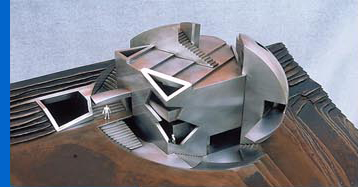 |  |
| | | An incredible structure in Culver City is the Gateway Art Tower, which is a black, and grey building fronted by what appears to be huge windshields of smoky glass. Yet another is the Conjunctive Points Theater Complex, which almost looks like giant twisted pieces of metal from a roller coaster rail. Perhaps the most famous is the Beehive Building, which looks like a coiled piece of ribbon stacked up tightly in a coil, and is caped by bold geometric forms. |  |
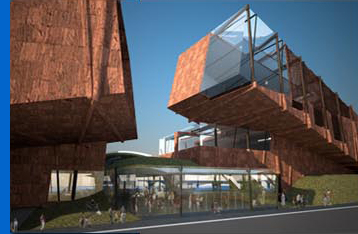 | | He has also designed the incredible Perm Museum XXI in Russia, which actually resembles two derailed boxcars lying on top of another freestanding glass structure. This huge achievement is one of the most distinctive looking buildings in the world.
There are the playful amusement park type designs and the futuristic international designs but yet another hallmark look that this creative genius has adopted is called the Haussmann effect. That is where a long row of buildings is designed to look as if they are toppling forward over each other sideways. The image is reminiscent of buildings being blown over in a nuclear blast. There are many good examples of this type of architecture in Culver City including a building called the Slash and BackSlash and the Pterodactyl office buildings. |  |
| | |  |
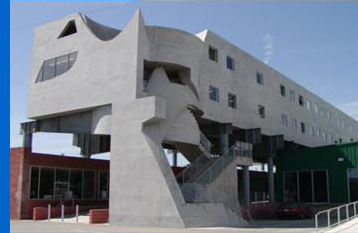 |  |
| | | Moss is also renowned for his art installations. A very famous one is The Caterpillar, which was commissioned for the Los Angeles County Museum of Modern Art and looks like the rings of giant redwood split into massive hollow forms that are propped up on stands. |  |
His efforts have gained recognition locally, nationally and internationally. In 2003 Eric Owen Moss was awarded the Business Week/Architectural Record Award for the design. This award celebrates individuals who combine excellent business practices with design. As he is a humanitarian at | 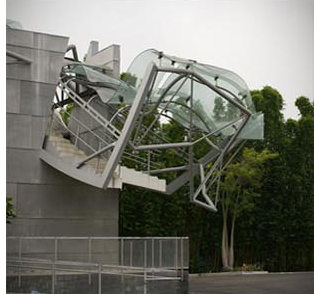 |  |
heart who also has the master builder sense of the good of all in mind, Eric Owen Moss designs have consistently gained recognition for innovative building techniques, community development and job creation, as well as excellence in design. |  |
Another well-known project of Mossís was called The City of the Future and featured his redo of the entire city of Los Angeles for the year 2106. This project was sponsored by the history channel and solves practical problems such as the movement of people, trains, cars, power and water. | 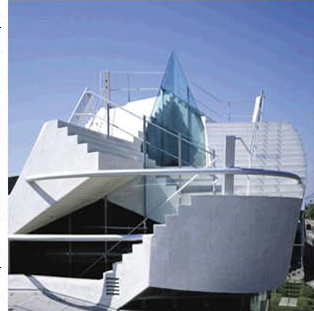 |  |
A very special project has been the Arnoff Guest House, which was built in the forties and is a round modular home that can be lived on and climbed on. It was built to give its owners a satisfying view of the surrounding California forest in Tarzana. |  |
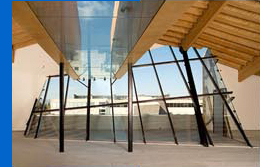 | | Eric Owen Moss received the AIA/LA Medal in 1998 for the achievement of an outstanding body of architectural works. He is a Fellow of the American Institute of Architects and was a recipient of the Distinguished Alumni Award for the University of California at Berkeley in 2003. He is currently still the director of the Southern California Institute of Architecture. |  |
| | |  |
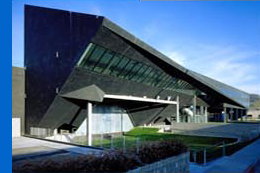 |  |
| | | | |  |
| | |  |
 |  |  |  |  |  |  |  |  |  |  | |